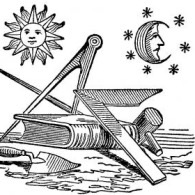Welcome to one of the most active flamenco sites on the Internet. Guests can read most posts but if you want to participate click here to register.
This site is dedicated to the memory of Paco de Lucía, Ron Mitchell, Guy Williams, Linda Elvira, Philip John Lee, Craig Eros, Ben Woods, David Serva and Tom Blackshear who went ahead of us.
We receive 12,200 visitors a month from 200 countries and 1.7 million page impressions a year. To advertise on this site please contact us.
|

|
|
Playing out of a barre
|
You are logged in as Guest
|
|
Users viewing this topic: none
|
|
Login  | |
|

   
Miguel de Maria
Posts: 3532
Joined: Oct. 20 2003
From: Phoenix, AZ

|
 RE: Playing out of a barre (in reply to SLJ) RE: Playing out of a barre (in reply to SLJ)
|
|
|
I think this is something that takes a lot of work, sensitivity, and time. Notice exactly what notes need to be played by the barre and try to only hold those down. In other words, if you aren't playing on the 3rd string, for example, don't kill yourself trying to hold it down with the index. Thus you can reduce the overall strength needed.
Fiddle around with the micro-position of the barre, wiggle it, rotate it, until you are holding down the notes with the minimum of pressure.
Don't use brute strength, use placement and drill the easiest placement when you find it.
Practice this up at the fifth fret or wherever it feels easiest. The 1st position is the worst and hardest and requires the most strength, so build up to it.
Practice placing the fingers first, then adding the barre. Make sure you are not using too much pressure on the fingers either.
Lay down a full barre and only make the sixth string ring clean. then only the fifth, then only the fourth, etc.
Practice slurs (hammers and pulloffs) while holding a half and full barre. Monitor the presssure and don't use too much.
Try to use the weight of the arm or the pull of the biceps to take some of the load from your thumb.
Go through a lot of music that has barres and specifically learn the passages with the barres. Don't forget to practice going into and out of the barre--don't only practice it in isolation.
Practice chromatic octaves (without a barre) every day.
Make sure to practice scales or other passages piannisimo (lightly as possible with both hands). The less pressure you use, the more finger independence you will have. And that is a good base to work from and then add tension.
As you can see, there are a lot of things to help this issue, but a lot of work is required. Most people never do the work and just use brute strength.
_____________________________
Connect with me on Facebook, all the cool kids are doing it.
https://www.facebook.com/migueldemariaZ
Arizona Wedding Music Guitar
|
|
|
|
REPORT THIS POST AS INAPPROPRIATE |
Date Jul. 19 2013 15:47:18
 |
|
 New Messages New Messages |
 No New Messages No New Messages |
 Hot Topic w/ New Messages Hot Topic w/ New Messages |
 Hot Topic w/o New Messages Hot Topic w/o New Messages |
 Locked w/ New Messages Locked w/ New Messages |
 Locked w/o New Messages Locked w/o New Messages |
|
 Post New Thread
Post New Thread
 Reply to Message
Reply to Message
 Post New Poll
Post New Poll
 Submit Vote
Submit Vote
 Delete My Own Post
Delete My Own Post
 Delete My Own Thread
Delete My Own Thread
 Rate Posts
Rate Posts
|
|
|
Forum Software powered by ASP Playground Advanced Edition 2.0.5
Copyright © 2000 - 2003 ASPPlayground.NET |
0.046875 secs.
|


 Printable Version
Printable Version







 New Messages
New Messages No New Messages
No New Messages Hot Topic w/ New Messages
Hot Topic w/ New Messages Hot Topic w/o New Messages
Hot Topic w/o New Messages Locked w/ New Messages
Locked w/ New Messages Locked w/o New Messages
Locked w/o New Messages Post New Thread
Post New Thread